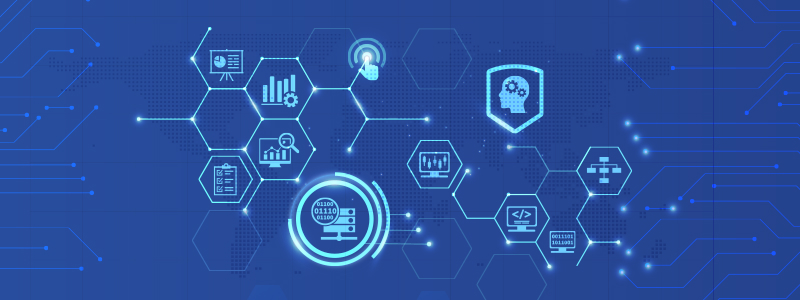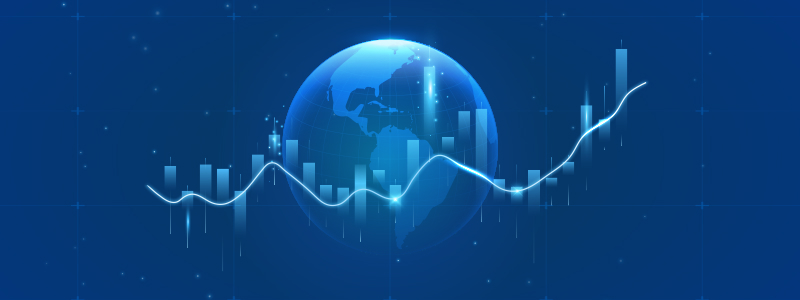
Top Data Governance Tools for 2024
According to Gartner, 80% of companies worldwide are expected to have efficient data management systems in place by 2025. This projection highlights the growing recognition of data governance tools as essential enablers for maintaining and enhancing the quality and security of organizational data within these data management systems.
In this blog, we will talk about some of the best data governance tools and software to consider in 2024. The goal is to help analyze different tools select the right solution for your company.
Understanding Data Governance
At its core, data governance is about taking control of the data management process. It guarantees that your data is accurate, accessible, and secure, making it a reliable foundation for decision-making. As such, data governance leads to data that is healthy and used responsibly and effectively, with a clear understanding of its source, who has access to it, and how it can be used.
Today, data breaches are all too common, and regulatory demands like GDPR and CCPA require strict data handling procedures. By using modern data governance software, you rest assured that your company-wide data is handled safely and ethically, ultimately helping you to build trust with your clients and partners.
What are Data Governance Tools?
Data governance tools are software and solutions that are the backbone for managing a company’s data ecosystem. These software applications are engineered to facilitate the organization, quality control, and protection of data assets.
Note that the terms “data governance tools,” “data governance software,” “data governance solutions,” and “data governance platforms” all convey similar meanings and are used interchangeably in the article.
Key Functions of Data Governance Tools
Data governance tools are essential in managing your organization’s data and keeping it well-organized, so your teams can easily retrieve and access it. These tools automatically scan and index databases and files to identify and eliminate errors and inaccuracies in the data sets, providing reliable data for decision-making.
Data governance tools are also significant in protecting sensitive information from unauthorized access, which enhances security in the face of rising cybersecurity threats. They support compliance with strict regulations, such as GDPR, by tracking the financial data lifecycle and documenting data storage, usage, and sharing practices.
These tools assist in making personalized recommendations by providing a framework to analyze customer data. This personalization, in turn, enhances customer experience and supports the development of business strategies backed by accurate data.
How Data Governance Tools Work
In practice, data governance tools have become a part of the overall data management strategy. Given the complexity of today’s data stacks, data teams frequently use these tools with their existing data systems and processes, often leveraging automation and AI to scale their data governance efforts further. Therefore, these tools are crucial for modern data management across industries, including finance, healthcare, retail, and technology, as they help these industries manage vast amounts of data safely and smartly, maintaining accuracy and compliance with laws.
Automated Data Discovery & Classification
With data governance software, you can automatically scan your organizational data landscape to identify and classify data stored on-premises or in the cloud. For example, modern data governance tools can recognize sensitive information, such as personally identifiable data or financial records, enabling you to categorize and better protect it.
This way, users in your organization will be able to understand what data they have, how it’s categorized, and what data they need to work with, making data governance scalable and more manageable.
Quality Control Mechanisms
Data governance tools allow organizations to create specific guidelines on how data should be collected, stored, and used, ensuring everyone follows the same standards.
They automate the oversight of data from its creation to its eventual archiving or deletion, ensuring that data is up-to-date and relevant. An example of this is the implementation of data retention policies that automatically archive data that has not been accessed for over a year, keeping the system efficient and reducing storage costs.

Data Lineage Tracking
Data lineage tracking is critical for regulatory compliance and for troubleshooting data issues. Therefore, organizations must understand the journey of their data from its origin to its current form to ensure transparency and auditability. Data governance tools offer advanced lineage features that visualize the flow of data through systems, helping organizations like banks trace data back to its source.
Adapting Business Operations and Maintaining Data Transparency
Data governance tools equip businesses with the flexibility to adjust their operational frameworks to stay aligned with the company’s evolving needs. For instance, as a company grows, these tools can help reconfigure data access permissions and workflows to match new organizational structures or compliance requirements.
Furthermore, these tools can track data movement across various systems and processes. This traceability ensures that businesses can see where their data comes from, how it’s used, and where it goes, which is important for auditing and compliance. An example is when a customer makes a purchase; data governance tools can trace the customer’s data from the point-of-sale system, through the inventory management system, and into the financial reporting system.
Best Data Governance Tools to Consider in 2024
1. Astera
Astera Data Stack is meticulously designed to reinforce data governance across organizations, providing a foundation for managing, securing, and leveraging data assets. Each feature of Astera directly contributes to enhancing data governance practices:
- Discover Data Easily: Use Astera’s advanced search and filtering to quickly locate the exact data you need, enhancing your ability to access and utilize information efficiently.
- Enrich Your Data: Attach relevant metadata to your data assets, building a shared understanding of each asset’s purpose and significantly improving data management practices.
- Own Your Data: Take control of governance for your data assets. As an owner, you directly handle access requests, confirming data is used appropriately and securely.
- Unify Data Language: Establish a comprehensive business glossary. This glossary creates a shared set of terms and definitions across your organization, minimizing misunderstandings and standardizing data use.
- Set Data Quality Standards: Implement data quality rules to measure and ensure your data’s accuracy, completeness, consistency, and reliability, keeping your data trustworthy and up to date.
- Profile Your Data: Through data profiling, actively examine and summarize your datasets to understand their structure and quality. This process helps identify potential vulnerabilities, verifying your data is secure and effectively managed.
2. Ataccama One
Ataccama One is a data governance and management solution that operates across on-premises, cloud, and hybrid environments. It is an AI-driven tool that supports data governance teams, stewards, scientists, and engineers by streamlining data governance processes through automation and intelligence.
Pros
- It offers governance features, including data lineage and access controls, establishing data security.
- Provides detailed profiling and management of metadata, allowing for improved data understanding and governance across the data lifecycle.
- Implements role-based access controls and stewardship capabilities, ensuring that authorized personnel access and manage data, aligning with governance policies.
Cons
- Integrating Ataccama with your current systems can be complicated and needs technical skills.
- It is resource-intensive, especially when it comes to large datasets.
3. Collibra
Collibra Data Governance is a component of the Collibra Data Intelligence Cloud platform, designed to improve data governance and management within organizations.
Pros
- Offers a Policy Manager application for centralized control of data policies and standards.
- Supports metadata documentation through its data dictionary, enabling users to easily find and understand data.
- Provides visualization of data lineage, showing the journey of data across systems and how it is processed and used.
Cons
- Requires intensive training to use its advanced features and automation, which can be tough at first.
- Getting all its features to work well with the systems might be challenging if new to it.
4. Erwin Data Intelligence
Erwin Data Intelligence by Quest streamlines enterprise data governance by offering tools that include data cataloging, quality assurance, and data literacy. Through its integrated approach, the software promotes informed decision-making and compliance with internal policies.
Pros
- Collects and catalogs metadata, simplifying generating data lineage and performing data quality assessments.
- Helps create and maintain a centralized repository of business terms and definitions.
- Enables tracing of data origin and transformations throughout its lifecycle, supporting transparency, compliance, and auditability in data governance efforts.
Cons
- The tool’s performance slows down with larger models, making report generation challenging.
- Generating reports for large models can be time-consuming and may lead to application crashes, resulting in lost changes.
5. Informatica
Informatica offers a data governance solution that helps organizations manage and govern their data across multiple cloud platforms.
Pros
- Automatically scans and indexes metadata, enhancing data understanding and governance.
- Integrates master data management and AI-based integration patterns to ensure accurate and consistent data.
- Offers visualization of data lineage and history, supporting automated tracing of data movement for impact analysis and compliance.
Cons
- The tool’s high complexity demands extensive training and lacks customization options for relationships, limiting visual and integrative capabilities.
- Navigation is complicated and offers limited scheduling options, struggling with performance when multiple jobs are scheduled.
6. OvalEdge
OvalEdge is a data management tool that automates data categorization and indexing. It works on-premises or in the cloud and offers data discovery, governance, and policy management features.
Pros
- Utilizes NLP and ML to organize data with tags, usage statistics, and custom tags, simplifying data discovery and organization.
- Crawls data sources, including data lakes and analytics software, to index metadata, enhancing data understanding and governance.
- Generates reports on data usage and errors, offering valuable insights into data health and activity.
Cons
- The data quality feature is underdeveloped and contains many minor bugs.
- The visual interface is prone to errors.
7. Talend
Talend Data Fabric is a platform that combines data integration, quality, and governance functionalities. It aims to streamline data management across its lifecycle, from integration to governance.
Pros
- Automatically crawls, organizes, and enriches metadata, while identifying data silos and assessing data trustworthiness.
- Facilitates a team-based workflow for setting priorities and tracking data governance projects, enhancing collaboration and efficiency in data management.
- Offers data lineage tracing and compliance tracking features, supporting data privacy efforts and regulatory compliance across the organization.
Cons
- Managing complex data flows can become extremely complicated, making it difficult to debug and identify issues when unexpected results occur.
- The tool provides poor explanations for errors, often leaving you unsure why an error occurred.
8. IBM Cloud PAK
IBM Cloud Pak for Data is a cloud-based platform that offers effective data governance, quality, and privacy management. It includes AI-powered data discovery, metadata enrichment, and quality management capabilities.
Pros
- Utilizes machine learning to automate the discovery, profiling, and cataloging of data, streamlining the organization of metadata and data assets.
- Provides self-service portals for various roles, enabling easy access to data and facilitating collaborative data governance and analysis.
- Includes tools for creating visual representations of data relationships, profiles, and lineage, aiding in the understanding and using data.
Cons
- The software struggles with user authentication complexities and limited control over secret management in IAM-enabled environments.
- It lacks a comprehensive training plan and the capability to enforce quotas, hindering effective data governance.
9. Oracle Enterprise Metadata Management
OEMM is a tool for harvesting, cataloging, and governing metadata from various data sources. Its features enable organizations to gain a comprehensive understanding of their metadata landscape.
Pros
- Automatically gathers metadata from various sources, enabling a unified view across relational databases, data warehouses, and BI platforms.
- Offers detailed data lineage tracing and impact analysis functions, aiding in understanding the data flow and the implications of data changes.
- Seamlessly integrates with Oracle Enterprise Data Quality, supporting a comprehensive data governance strategy.
Cons
- The system demands extensive training for proper management and a complex interface that requires in-depth study before professional use.
- The user interface is prone to glitches and can be slow to respond, impacting efficiency and usability.
10. Alation
Alation is designed to simplify managing data assets and governance policies in hybrid cloud and multi-cloud environments. The Data Governance App aims to streamline secure access to reliable data across IT systems by incorporating AI and machine learning.
Pros
- Allows users to create and map governance policies to specific data assets, facilitating clear and effective policy management.
- Provides AI-driven automated data curation functions and identifies potential data stewards, optimizing the stewardship process.
- Supports creating and configuring data governance workflows without requiring coding, making process setup more accessible.
Cons
- The absence of term tables in the Alation Analytics area complicates managing business glossary creation.
- The BI functionality falls short compared to RDBMS support, with confusing data mapping and dashboard organization
Benefits of Using Data Governance Tools
Incorporating data governance tools into data management strategy gives organizations numerous advantages, revolutionizing how they handle, utilize, and exploit their data. Additionally, these tools enable organizations to leverage data in ways that could potentially lead to significant improvements in their operations and decision-making processes.
-
Ensures Data Accuracy and Consistency
Data governance software provides several quality features that ensure your data stays healthy. For example, by automatically checking and correcting data across systems, these tools help businesses avoid costly mistakes arising from inaccurate data, such as making poor strategic decisions or misreporting financials.
-
Improves Compliance and Security
Data governance tools help you manage data access, monitor usage, and protect sensitive information. Clarity on who has access to and is responsible for what data will help your data teams operate more efficiently and ensure compliance with data governance policies.
-
Boosts Operational Efficiency
Data governance tools facilitate streamlined business operations by automating several data management tasks. For instance, these tools help you organize data, making it easier and quicker for your data teams to locate the required information.
Similarly, modern data governance platforms can automate access controls and lineage tracking, which means you can monitor data movement across your organization and demonstrate compliance with regulatory requirements.
-
Facilitates Better Decision-Making
Strategically using data governance tools empowers you to make critical business decisions based on the most accurate and up-to-date information. These tools tackle two significant challenges to data-driven decision-making: data quality and accessibility. As such, these tools are precious in dynamic markets where strategic agility can provide your organization with a competitive edge.
-
Enhances Data Security
Maintaining trust and safeguarding intellectual property is a core component of a data governance framework, especially when your customers entrust you with vast amounts of sensitive information. A data governance platform with robust security features can help you secure organizational data sets. For example, you can implement encryption and access controls to protect data against unauthorized access.
-
Reduces Costs
Data governance tools can help your business avoid expenses related to manual data cleanup, regulatory fines, and data breaches. These platforms also offer a viable solution to ever-increasing storage costs by identifying and eliminating redundant, obsolete, or trivial (ROT) data. Furthermore, they enable more accurate forecasting and resource allocation, which leads to better overall financial management.
Selecting the Right Data Governance Tool
As evident by the list of data governance tools above, the market offers several platforms and solutions for data governance. While this competition will undoubtedly benefit the consumers, it can easily make selecting the right governance tool complex and time-consuming.
However, you can make an informed decision if you consider certain important factors when selecting your organization’s ideal data governance tool. Here’s a detailed guide on what to keep in mind while browsing through different data governance solutions:

Understanding of Data Landscape
Before choosing a tool, it is essential to clearly understand data architecture, including where data resides, how it flows within the organization, and who uses it. This understanding will act as a guide in selecting a tool that can handle specific data ecosystems. It means choosing software that can integrate with the databases the organization utilizes, support their business processes, and accommodate their data formats.
The goal is to find a tool that can interact with all aspects of an organization’s data landscape, from storage and processing to analysis and reporting, to facilitate effective data management across the entire entity.
Define Data Governance Goals
Identify what goal to achieve with data governance. Whether it’s improving data quality, certifying regulatory compliance, enhancing security, or fostering a data-driven culture, these goals will influence the right tool.
When setting goals for data governance, an organization might aim to enhance data quality, ensure they meet regulatory standards, boost their data security, or develop a culture that values data-driven decisions. These objectives will guide them in choosing the most suitable data governance tool.
For instance, if a company’s primary goal is to improve data quality, they would look for a tool that excels in identifying and correcting inaccuracies in their data. This process could mean selecting software that offers advanced data profiling and cleansing capabilities, enabling the organization to detect errors automatically and ensure their data is accurate and reliable.
Ease of Use
Ease of use is essential when selecting the right data governance tool. It directly impacts how quickly your team can adopt and effectively utilize it. A user-friendly interface and intuitive features mean less time spent on training and more on achieving your data governance goals.
For example, suppose a tool offers a straightforward dashboard where users can easily navigate to find data quality metrics, manage data access, or set governance policies. In that case, your team is more likely to use it efficiently and accurately.
This ease of use ensures you can leverage the data to drive decision-making and value creation rather than struggling with complex software.
Assess the Flexibility for Integration
The tool should easily fit in with your existing data systems and workflows to avoid data silos and redundancy. This flexibility minimizes disruptions as your data teams leverage the current IT infrastructure and technology.
For example, if your company uses a specific CRM and analytics platform, the right data governance tool should easily connect to both, allowing for seamless data flow and management. This connection means your team can continue working with familiar systems while benefiting from data governance capabilities, such as improved data quality and access control, without drastic changes to their daily processes.
Scalability And Flexibility
To meet the fifth criterion, data governance tools must scale and flex with your data’s growth and diversity. They should manage your data’s increasing size, different types, and the speed at which it’s generated. Moreover, as the demands and roles of those who use your data evolve, these tools must adapt, offering ways to tailor and tweak settings to match your unique governance needs.
For example, a tool that integrates seamlessly with your current databases and analytics platforms while allowing you to define who can access what data ensures that your governance system grows with your company.
Cost And Value
Assessing the cost and the value that data governance tools bring is essential. These tools must justify their expense by significantly lowering data-related risks, boosting the reliability of your data, and increasing its overall worth.
They should align with your financial constraints and resource availability, offering flexible payment options like monthly subscriptions, one-time licenses, or usage-based fees.
Furthermore, they must include support and upkeep services to ensure smooth operation. For instance, investing in a tool that offers detailed analytics on data usage and quality improvements can show a tangible return on investment by enhancing decision-making processes and compliance, making it a cost-effective choice for your data governance strategy.
Evaluate the Support and Community
Consider the vendor’s level of support, including training, customer service, and community forums. A strong support network can ease the implementation process and maximize the tool’s value for your organization.
For instance, imagine a tool with comprehensive training modules, a responsive customer service team, and an active user community. This environment means you can quickly learn how to use the tool effectively, get help when encountering problems, and exchange tips with other users.
Such support smooths out the initial learning curve and ensures ongoing assistance and improvement, making it easier for your organization to adopt and benefit from the tool.
Must-Have Features in a Good Data Governance Tool
Metadata Management
Beyond cataloging, the tool should offer deep insights into the data’s metadata, allowing us to understand its lineage, quality, and lifecycle. This feature is crucial for tracing data back to its source and understanding its transformation over time.
Workflow Automation for Data Stewardship
Automating governance workflows can significantly improve efficiency and ensure consistent application of governance policies. Look for tools that offer customizable workflows to match the governance processes.
Collaborative Features for Cross-Team Engagement
Data governance is a cross-functional effort. The tool should promote collaboration across different departments, enabling users to contribute to data quality, compliance, and management.
Advanced Security Features
Beyond basic access controls, seek tools offering sophisticated security features like anomaly detection, encryption, and detailed audit trails. This security is essential for protecting sensitive data and complying with stringent regulations.
Comprehensive Reporting and Analytics
The ability to generate detailed reports is important for monitoring the effectiveness of your data governance initiatives. These insights can help fnd areas for improvement and demonstrate compliance with regulatory bodies.
Concluding Thoughts
Data governance tools are essential for businesses to keep their data accurate, safe, and in line with rules and regulations. These tools help businesses use their data well, ensuring every information is valuable and secure.
Astera Data Stack is an all-in-one solution for efficiently managing and governing data. Its easy-to-use interface allows data handling without the need to code. Whether combining data sources, cleaning data, or ensuring it meets quality standards, Astera simplifies the process.
If you’re looking to improve how you manage your data, give Astera Data Stack a try. Visit our website and sign up for a 14-day free trial. Experience how Astera can make data governance straightforward and effective for businesses.
Take Control of Your Data with Astera
Ready to streamline your data management and governance processes? Try Astera Data Stack today and experience how easy it can be to ensure data accuracy, security, and compliance. Sign up for a 14-day free trial on our website and see the difference.
Start a Free Trial Astera AI Agent Builder - First Look Coming Soon!
Astera AI Agent Builder - First Look Coming Soon!

